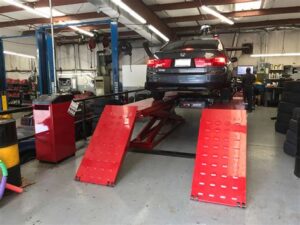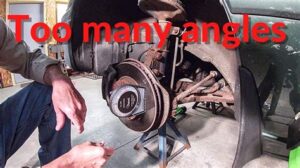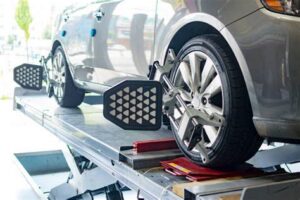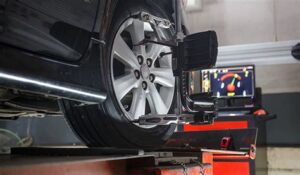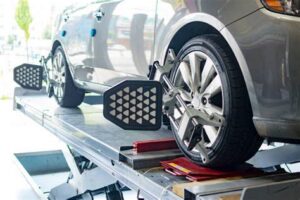Maintaining your vehicle’s alignment is crucial for ensuring a smooth and safe driving experience. Properly aligned wheels not only enhance vehicle handling but also prolong tire life and improve fuel efficiency. However, many drivers are often unsure about how frequently their car should undergo alignment adjustments. In this article, we will delve into the factors that influence the need for wheel alignment, highlight signs that indicate it might be time for a check-up, and discuss the benefits of staying informed about alignment schedules. We’ll also provide expert recommendations on how often you should align your car for optimal safety. Whether you’re a seasoned car owner or a new driver, understanding wheel alignment practices can make a significant difference in your vehicle’s performance and longevity. Let’s get started!
Understanding How Often To Align Your Car’s Wheels
Maintaining proper wheel alignment is crucial for the overall performance and safety of your vehicle. However, many car owners often wonder how often they should align their car’s wheels. The frequency of wheel alignment can vary based on several factors and conditions. Generally, it is recommended to check your alignment every 6,000 to 10,000 miles or at least once a year, but this can vary based on usage, vehicle type, and driving habits.
For instance, if you frequently drive on rough roads, encounter potholes, or carry heavy loads, you may need to have your wheels aligned more often. On the other hand, if you typically drive on well-maintained highways, your alignment needs might be less frequent. Additionally, seasonal changes can also impact wheel alignment. Regular maintenance checks can ensure your vehicle’s wheels are aligned correctly, thereby enhancing tire lifespan and improving fuel efficiency.
Always pay attention to your vehicle’s handling and tire wear patterns. If you notice any indications of misalignment, it’s crucial to address the issue promptly. Understanding how often to align your car’s wheels can save you money in the long run by preventing premature tire wear and ensuring a smoother driving experience.
Key Factors That Influence How Often Alignment Is Needed
Determining how often to align your car’s wheels is not a one-size-fits-all situation. Several key factors can influence the frequency with which you should consider wheel alignment. Understanding these factors can help extend the life of your tires, enhance your vehicle’s safety, and improve overall performance. Here are the primary factors to consider:
- Driving Conditions: Frequent driving on rough, uneven roads or pothole-ridden streets can cause your wheels to become misaligned more quickly. If you regularly encounter poor road conditions, you may need alignment checks more often.
- Type of Vehicle: Larger vehicles, like trucks and SUVs, typically experience different wear and tear compared to sedans. Depending on the design and weight of your vehicle, the alignment needs may vary.
- Driving Habits: Aggressive driving, including hard braking and sharp turns, can lead to quicker misalignment. If you tend to drive in a sporty manner, consider opting for more frequent alignment assessments.
- Tire Wear Patterns: Monitoring your tire tread can provide insights into alignment issues. If you notice uneven tire wear, it could be a sign that an alignment is needed sooner rather than later.
- Time Since Last Alignment: Even if you haven’t encountered any of the aforementioned issues, it’s wise to adhere to a regular alignment schedule, typically every 6,000 to 10,000 miles, or as recommended by your car manufacturer.
By understanding these factors, you can make more informed decisions about how often to get your wheel alignment checked, ensuring a smoother ride and better fuel efficiency.
Signs That Indicate It’s Time For Wheel Alignment
Recognizing the signs that indicate it’s time for wheel alignment can save you from more significant car issues down the road. Here are some common indicators:
- Uneven Tire Wear: If you notice that your tires are wearing unevenly, particularly on one side, it may be a clear sign that your wheels need alignment. This not only affects your tires’ lifespan but also impacts your vehicle’s handling.
- Vehicle Pulling to One Side: If your car drifts to the left or right when you are driving straight, it suggests that your wheels are misaligned. This can make your ride uncomfortable and potentially dangerous.
- Steering Wheel Off-Center: A steering wheel that is tilted when driving straight can signal that your alignment is off. Ideally, your steering wheel should be centered when the vehicle is going straight.
- Excessive Vibration: Unusual vibrations in the steering wheel or throughout the vehicle can be a sign of misalignment. This can lead to a less smooth ride and should be addressed promptly.
- Statement of Alignment History: If it’s been a while since your last alignment or if you’ve recently hit a pothole or curb, consider having your alignment checked. Regular maintenance is key to understanding how often your vehicle needs attention.
Being aware of these signs can help you determine how often you need to check and potentially align your wheels, ensuring a safer and more efficient driving experience.
Benefits Of Knowing How Often To Get Wheel Alignment
Understanding how often you should get your car’s wheel alignment is crucial for maintaining vehicle safety and performance. Here are some of the key benefits:
Overall, knowing how often to get your wheel alignment not only enhances your driving experience but also helps you make informed decisions about vehicle maintenance.
Recommendations On How Often To Align Your Car For Safety
Ensuring your car’s wheel alignment is correctly maintained is crucial for your safety on the road. Regular checks and alignments can help prevent a variety of issues that could compromise both vehicle performance and driver safety.
As a general guideline, it is recommended to have a wheel alignment performed every how often you change your oil, typically every 5,000 to 7,500 miles. This frequency allows you to catch any misalignments before they lead to uneven tire wear and more serious mechanical issues.
In addition to this, consider getting an alignment:
- Whenever you purchase new tires.
- If you notice your steering wheel is off-center while driving straight.
- After hitting a large pothole or curb.
- If your vehicle experiences a change in handling, such as pulling to one side.
These recommendations are particularly vital for maintaining not just the longevity of your tires but also the overall safety of your vehicle. Regular inspections by a qualified mechanic can help ensure that your alignment is in check, contributing to a smoother and safer driving experience.
Frequently Asked Questions
How often should I get my car’s alignment checked?
It is generally recommended to check your car’s alignment every 6,000 miles or during regular tire rotations.
What are the signs that my car needs alignment?
Signs that your car may need alignment include uneven tire wear, the steering wheel being off-center, or the vehicle pulling to one side while driving.
Does alignment affect fuel efficiency?
Yes, proper alignment can improve fuel efficiency. Misaligned wheels create additional resistance, which can lead to higher fuel consumption.
Can I align my car myself?
While some basic checks can be done at home, precise alignment requires specialized equipment and should generally be handled by a professional.
How much does a car alignment typically cost?
The cost of a car alignment can vary, but it typically ranges from $75 to $100, depending on the make and model of the vehicle and the service provider.
How long does a car alignment take?
A typical car alignment service usually takes about 1 to 2 hours, depending on the shop’s workload and the specific adjustments needed.
Is wheel alignment part of regular maintenance?
Yes, wheel alignment is an essential part of regular vehicle maintenance and should be included in your overall car care routine.

